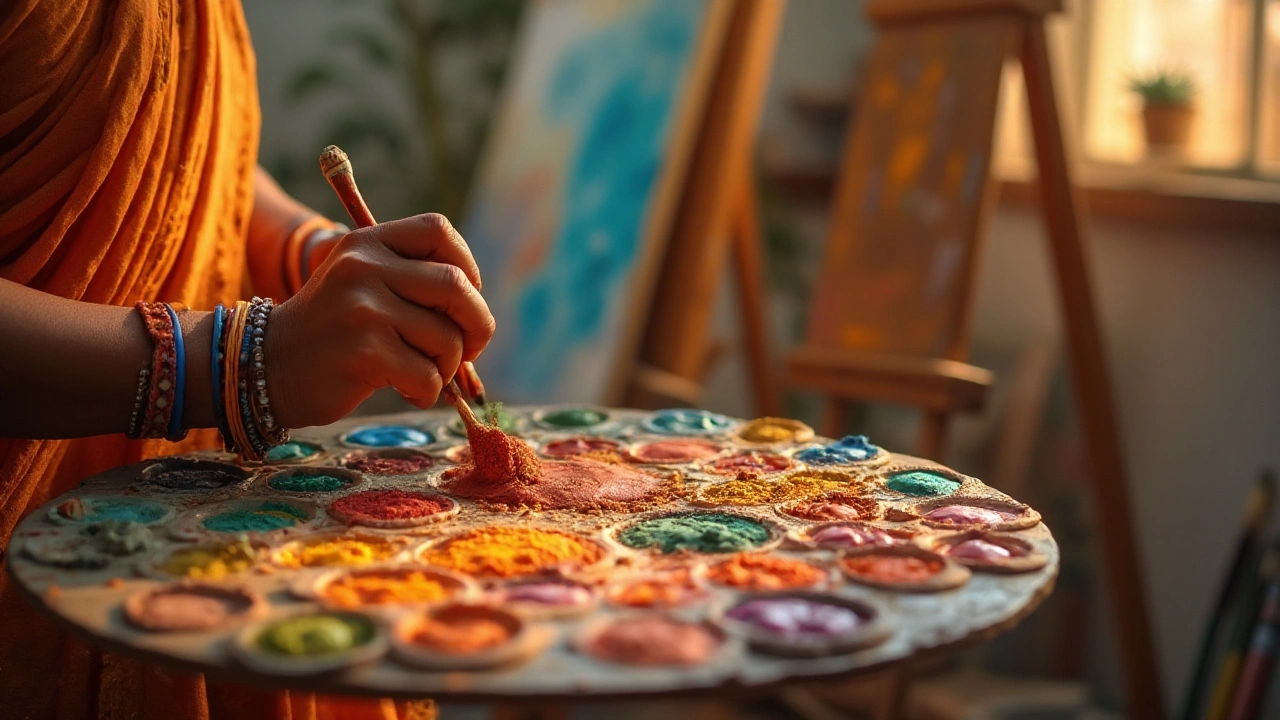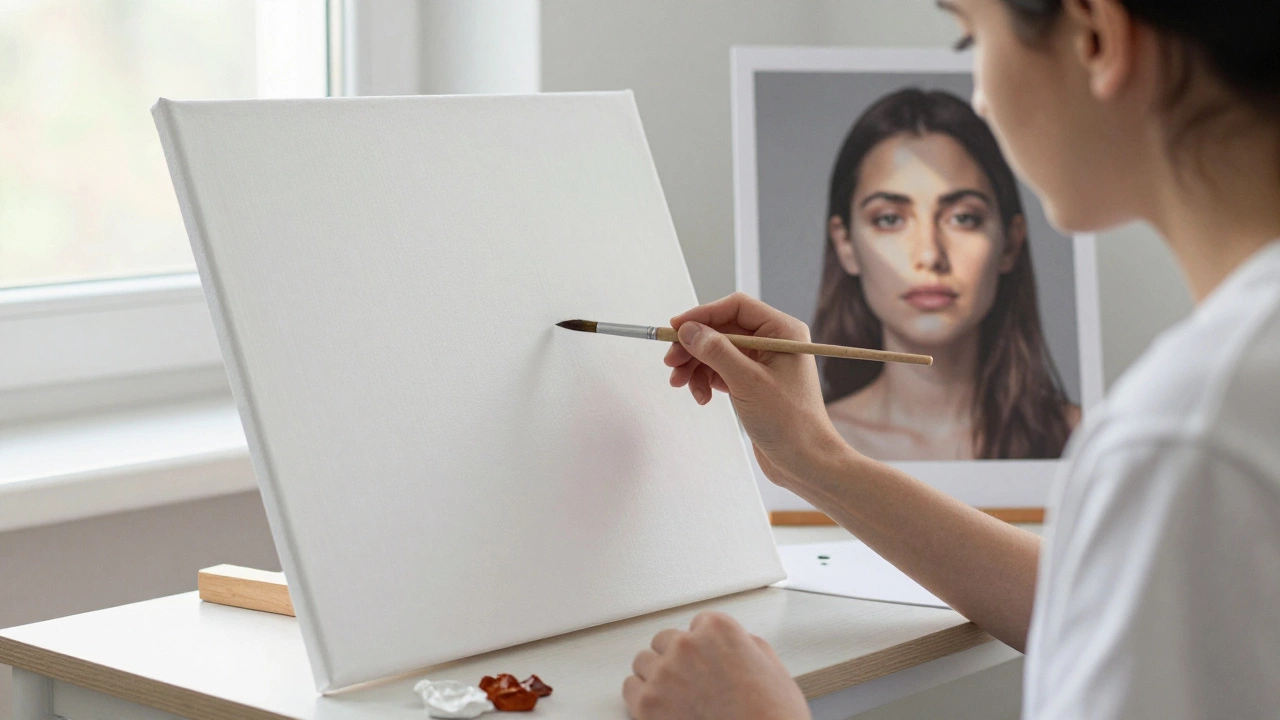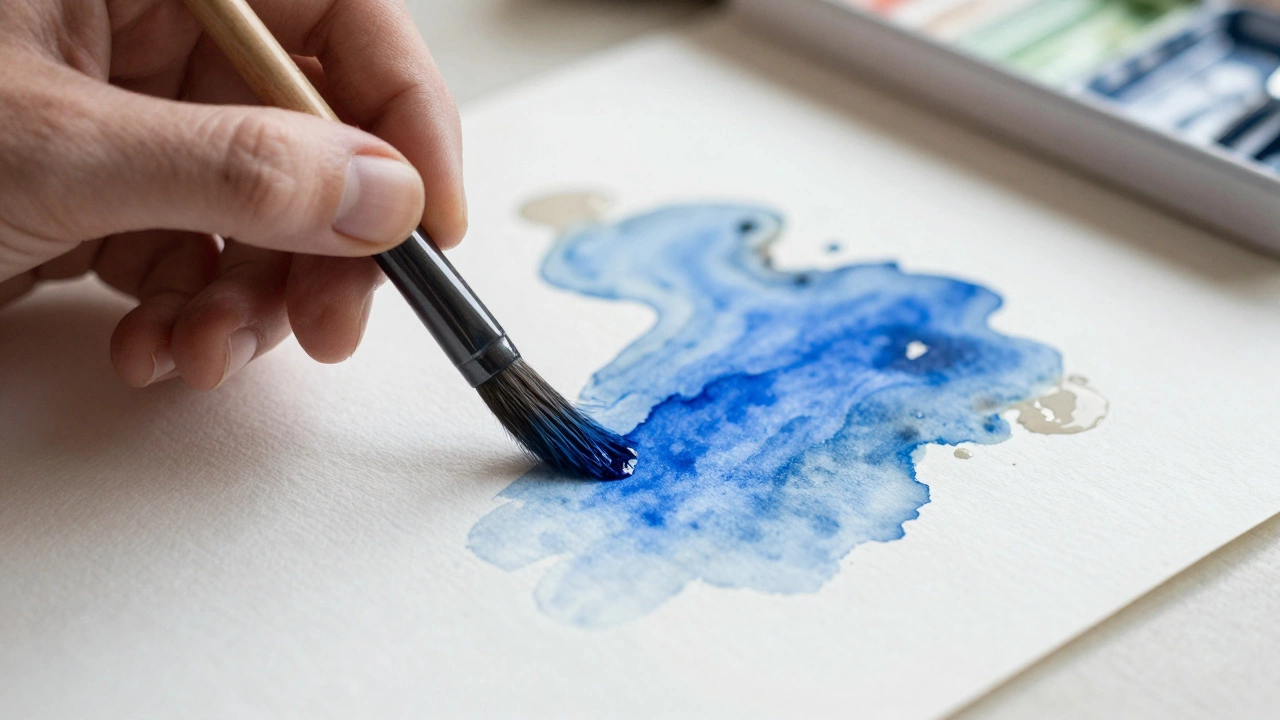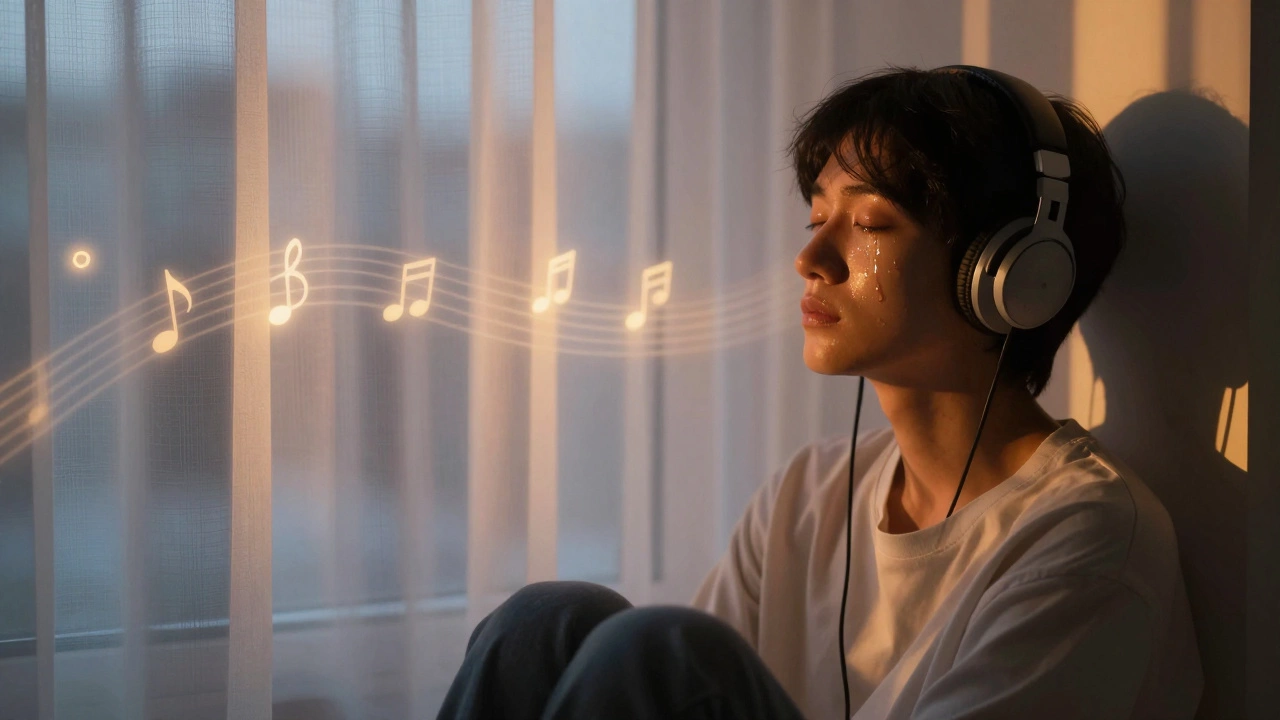Color selection is the heart of portrait painting. It is an art that combines technical skill with personal intuition, allowing each portrait to tell its unique story through hues and shades. Understanding how color influences emotion and perception can transform a simple canvas into a captivating piece of art.
The journey begins with grasping the essentials of color theory, which guides artists in balancing and harmonizing hues effectively. By choosing the right palette, you can make your subject's character and mood shine through, creating deeper connections with viewers.
From the subtleties of skin tones to the vibrant contrasts of complementary colors, every choice matters. This exploration will provide you with practical tips and insights into mastering the colorful dynamics of portraiture. It's not just about depicting a likeness; it's about breathing life into your artwork.
- Understanding Color Theory in Portraiture
- Essential Color Palette for Portrait Painting
- The Role of Skin Tones in Portraits
- Using Contrast and Complementary Colors
- Practical Tips for Captivating Portraits
Understanding Color Theory in Portraiture
In the fascinating realm of portrait painting, color theory acts as the artist's guiding light, helping them navigate the complex interplay of hues that bring their subjects to life. The application of color theory in portraiture is not only scientific but also profoundly intuitive, giving artists the tools to evoke emotions and craft atmospheres that resonate with viewers. Central to this exploration is the color wheel, a visual representation of colors arranged according to their chromatic relationship. By understanding primary, secondary, and tertiary colors, artists harness a spectrum of possibilities, crafting palettes that do more than depict—they' captivate and engage.
Color theory establishes a framework where elements like harmony, contrast, and balance play crucial roles. Terms like complementary, analogous, and triadic colors describe the relationships between hues, each offering its own aesthetic and emotional effects. Complementary colors, which are opposite each other on the color wheel, create striking contrasts when placed side by side, bringing vibrancy and dynamic energy to a portrait. In contrast, analogous colors—those next to each other on the wheel—provide harmony and a more muted, serene visual experience, perfect for capturing softer moods and subtler emotions.
Famed artist Johannes Itten, a luminary in the field of color theory, once shared his insight on this subject:
"Colors are forces, radiant energies that affect us positively or negatively, whether through harmony or discord."This notion underscores the artist's task—to select and balance colors in a portrait in a way that accurately reflects the subject's essence and the intended emotional impact. Whether portraying warmth through the use of reds and oranges or evoking coolness with blues and greens, the choice of palette shapes the audience's perception and emotional response.
Delving deeper, the impact of culture and psychology on color interpretation cannot be overlooked. For instance, the color red might symbolize passion and love in some cultures, while in others, it can signify danger or caution. Understanding these nuances allows the artist to convey messages that resonate on a broader scale. This sensitivity to color meaning informs the decision-making process in every portrait painting, guiding the artist as they interpret and represent their subject's unique story.
In practice, employing color theory in portraiture involves both planning and experimentation. Many artists start by devising a rough color scheme based on the subject's personality, the desired emotional undertone, and the setting of the portrait. As the painting progresses, adjustments are made, with artists shifting hues and tones to achieve the desired effect—whether it be the warm glow of sunlight on skin or the soft shadows that bring depth to a semblance. This fluid process allows the painter to stay attuned to both the artistic vision and the spontaneous revelations that occur as their work unfolds.
Ultimately, the effective use of color theory in portraiture is about storytelling through hues. It's about blending technical knowledge with personal intuition to create works that move and inspire. Whether you're a seasoned artist or a curious beginner, understanding these principles can open up new dimensions in your creative practice, providing you with the tools to express your vision in the most vivid way possible.
Essential Color Palette for Portrait Painting
When it comes to portrait painting, selecting the right colors can be the difference between capturing the subject's life-like presence or rendering a portrait that falls flat. The magic lies in an essential palette, a selection of colors that provide artists with a solid foundation to blend and create various skin tones, shadows, and highlights. While personal preference and style may guide the final choice, certain colors have earned their status as staples in the world of portraiture. Historically, the 'Zorn palette', named after the Swedish painter Anders Zorn, is one of the most revered selections. It includes just four basic colors—yellow ochre, ivory black, vermilion, and titanium white—yet it's incredibly versatile. This combination can yield a surprising range of natural skin tones, offering a great starting point for those who prefer a limited palette approach.
Adding to this, modern painters often expand this palette to include shades like burnt sienna and ultramarine blue. These additions are particularly helpful for those looking to capture a broader range of ethnic skin tones or to achieve higher contrast and depth. Burnt sienna provides a rich warmth that's ideal for conveying the warmth of human skin in varied lighting conditions. On the other hand, the inclusion of ultramarine blue allows artists to create cooler shadows, which can add a layer of sophistication and realism to the portrait. Another important color that often finds its way into artists' palettes is cadmium red, which is used for any blush in skin, lips, or the tips of the ears. These choices ensure that painters have the tools needed to bring their portrait tips to life.
A well-known British painter, Lucian Freud, once mentioned, "The longer you look at an object, the more abstract it becomes, and, ironically, the more real." His words remind us of the intricate relationship between color choices and the expressiveness of a painting. Choosing the right colors not only grounds the subject in reality but also highlights their unique attributes.
Beyond these fundamental colors, many artists incorporate a few more tones based on personal preference and the specific project requirements. The goal is to create a cohesive and harmonious palette that can adapt to the light and shadow of the subject matter. A common strategy is to use a color wheel to explore complementary colors, where you can find inventive ways to blend colors like phthalo green or raw umber for richer undertones. The key is not to be overwhelmed by the multitude of choices but to start with a reliable base and then intuitively build upon it, allowing the art to grow organically within its own framework. Remember, the colors you choose will influence not just the physical realism of the portrait but its emotional impact too. This thoughtful selection serves as a testament to one’s skills in painting techniques and the deep understanding of color dynamics.
Working with these colors demands practice and patience, as the slightest variation in mixing can lead to significant differences in the portrayed emotions and atmosphere. An approach some artists adopt is similar to a
- scientific method—testing different mixes
- and refining them over time
- to achieve the desired tone.
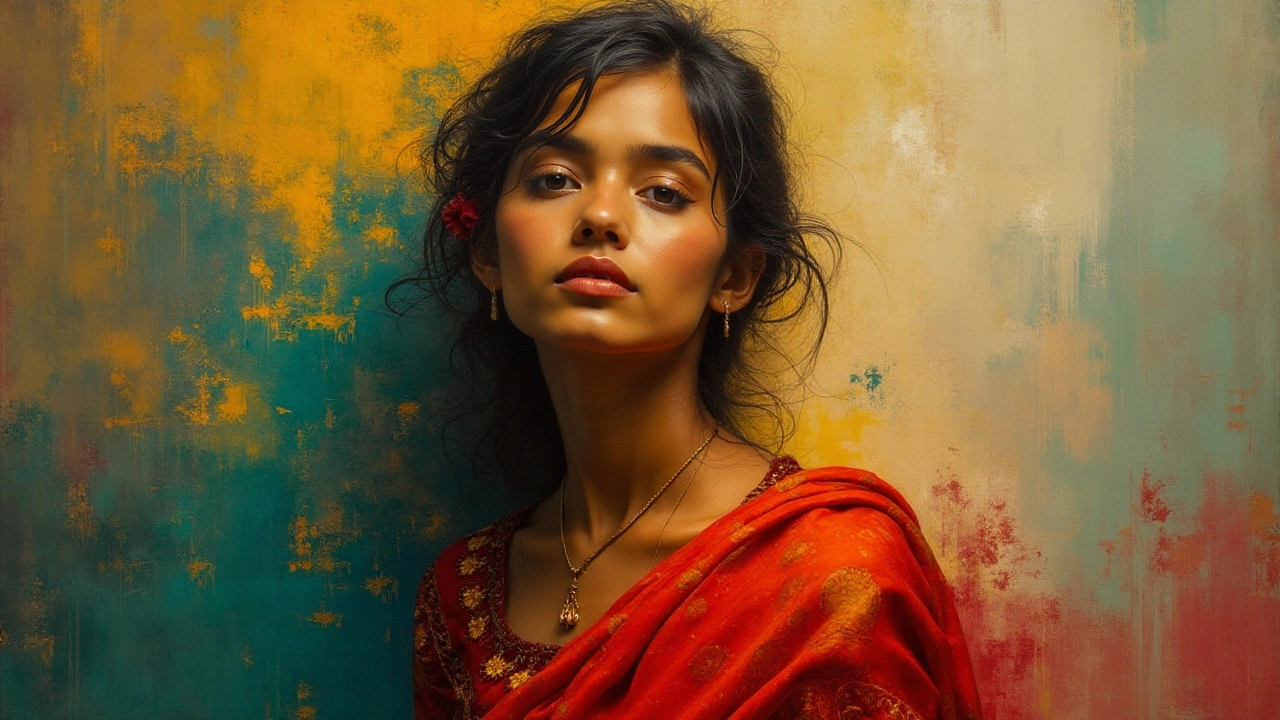
The Role of Skin Tones in Portraits
When it comes to portrait painting, capturing the complexity and richness of skin tones plays a vital role in conveying the true essence of the subject. Artists often grapple with the question of how to effectively portray the vast diversity of human skin, which can reflect a spectrum of colors under different lighting conditions. It is well known that skin is not just a single color but a multitude of hues that require a keen eye for detail and patience to capture accurately. Many artists begin by examining the underlying base tones, which serve as the foundation for more intricate overtones that bring the complexion to life.
A common approach involves mixing primary colors like red, yellow, and blue to create a base skin tone, which is then adjusted with white or black to lighten or darken it as needed. This method helps achieve a realistic and harmonious effect, ensuring the portrait feels lifelike. It's also essential to consider the subject’s unique environment, as the light source can dramatically influence the perceived skin color. For instance, warm lighting can add golden hues, while cool lighting might introduce blue or green tints. Understanding these nuances is crucial because it allows artists to be more adaptive and responsive to their models' surroundings.
"The aim of art is not to represent the outward appearance of things, but their inward significance." - Aristotle
Beyond the basics, the study of skin tones in portrait painting encourages experimenting with variations and layering techniques. Layering is particularly effective for building depth and texture, which mimic the natural translucency of human skin. Artists frequently employ glazing techniques, where thin layers of semi-transparent paint are applied over an existing dry layer, subtly altering the color and adding complexity to the tone. This level of detail can make the difference between a flat image and one with a stunning three-dimensional quality.
| Skin Type | Common Undertones | Suggested Palette |
|---|---|---|
| Light | Pink, Olive | Titanium White, Burnt Sienna, Ultramarine Blue |
| Medium | Yellow, Olive | Raw Umber, Yellow Ochre, Cadmium Red |
| Dark | Red, Blue | Burnt Umber, Alizarin Crimson, Phthalo Blue |
This art form also demands attention to detail in areas of highlight and shadow, where subtle changes in skin tones matter significantly. Highlights should retain the vibrancy of the skin, while shadows can provide the depth needed to add realism. Portraying shadows might require cool tones to balance the warmth in mid-tones and highlights. Such contrasts breathe life into the painting and enhance the portrait tips which artists can rely on to achieve dynamic results.
Using Contrast and Complementary Colors
Creating striking portrait paintings often involves the strategic use of contrast and complementary colors. This technique brings a vivid depth to your art that captivates viewers. By understanding the power of these color relationships, you can guide the focus where it's most needed, enhancing the emotional impact of your portrait. One of the basic principles in art is that high contrast in tones and colors tends to draw attention. Thus, using brighter highlights against darker shadows in your portrait can bring out the details of your subject's face, making it the focal point of the piece. This not only sets the mood but also defines the three-dimensional form in a more convincing manner.
Complementary colors, sitting opposite each other on the color wheel, create a visual harmony when used together. For instance, pairing blue with orange or red with green can invigorate your portrait with vibrancy and energy. The magic happens in their interaction—using them adjacent to each other can make each hue appear more intense and lively. This approach can be particularly effective in highlighting features such as eyes or lips, giving them an almost luminous quality. Master artist Vincent van Gogh famously exploited these dynamics in his works, stating,
"I use color more arbitrarily, to express myself forcefully."his words resonate with the freedom found in such color experimentation.
When employing these techniques, it's crucial to consider the mood you wish to convey. A serene, calm portrait might benefit from less contrast and softer, analogous colors, creating a harmonious and gentle flow. On the other hand, a dynamic, intense image could thrive on bold contrasts and complementary palettes. To ensure your composition doesn't become overwhelming, balance is key. Use restrained application of intense colors, interspersed with neutral tones, to maintain harmony. This not only prevents the vibrant portions from overtaking the subject's character but also allows the viewer's eye to rest, making the overall portrait more pleasing and engaging.
There are practical approaches to experimenting with these concepts in portraiture. A popular method involves adjusting the background and attire of the subject to contrast with their facial tones. For instance, placing a subject with warm skin tones against a cool blue background can accentuate the warmth of their complexion, adding emotional depth. Likewise, incorporating complementary colors into clothing or accessories can direct attention precisely where intended. This technique is often used by photographers and painters alike, proving its versatility and effectiveness across mediums.
These techniques can be complemented by statistical insights; recent art surveys indicate that pieces with strong contrast and complementary color use command significantly higher engagement rates. The interplay of color and form captures our attention and holds it, appealing to the basic human love for harmony and balance. By understanding and applying these principles in your portraiture, you not only enhance the aesthetic appeal but also imbue your work with a memorable quality that resonates deeply with viewers.
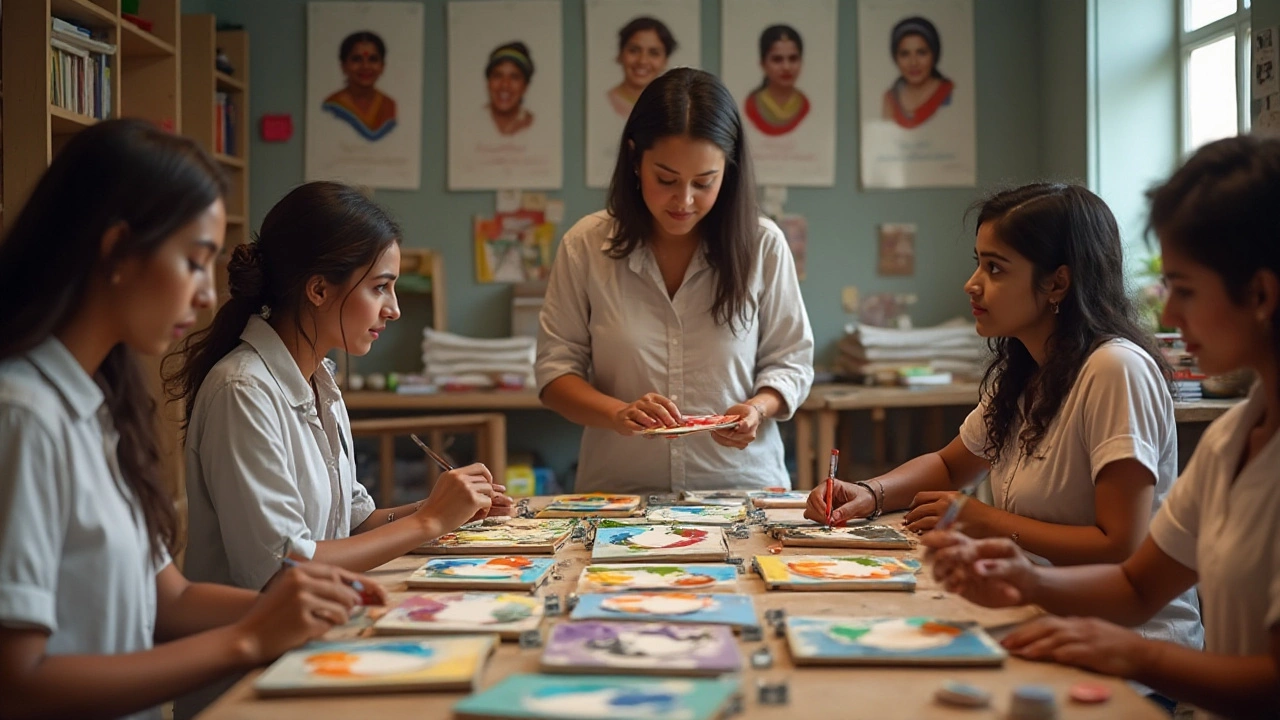
Practical Tips for Captivating Portraits
When it comes to crafting portraits that captivate and speak volumes, much of the magic lies in the marriage of technique and sensation. One of the primary secrets is the attentive selection of a color palette that transforms not just the semblance but the spirit of the subject. Start by examining the existing light source and envision how it will interact with your chosen hues. Whether the light filters warmly through a golden sunset or casts cool shadows under the shade of leafy trees, these elements should guide your palette selection. Remember that colors react differently in natural versus artificial lighting, a fact that can create surprising results or unfortunate mishaps.
Building an effective palette relies on understanding the nuances of skin tones. These tones are not simply pink, beige, or brown, but a spectrum painted with cool, warm, and neutral reflections, often based on ethnicity, lighting, and individual characteristics. Use a base color that's dominant and then blend in hues that reflect the natural variation in the skin, often observed around the cheeks, nose, and jawline. Keeping a mental note or visual reference nearby can ease this detailed work. Consider employing a limited palette initially, which allows you to mix colors more cohesively, resulting in a harmonious and natural look.
Contrast is another element that can significantly enhance the visual interest of portrait painting. Utilize complementary colors to create dynamic energy and focus in your portrait, especially around the facial features where you want the viewer's attention to gravitate. Carefully planned contrasts between background and subject can also help separate the two, providing clarity and depth. You may find inspiration in the words of Claude Monet, who once said,
"Color is my day-long obsession, joy, and torment."This suggests an endless exploration of how colors interplay and affect us. Take time to explore this spectrum personally, as it differs for each artist.
Equipping yourself with the right tools can also contribute immensely to achieving captivating portraits. This is not just limited to brushes and paints but extends to the understanding of mediums such as oils, acrylics, or watercolors. Each medium has its own behavior; oils allow for smoother blending and longer working times, while acrylics dry faster but offer more distinct layering possibilities. Experiment with each to find what aligns best with your vision and workflow. Lastly, self-critique and external feedback hold invaluable roles. Step back from your work frequently to view it with fresh eyes, and don't shy away from the opinions of fellow artists or trusted companions. Having this dialogue can bridge the gap between your intentions and the completed piece.
Documenting and reviewing your creations can also aid in refining your technique. Keeping a journal or portfolio of your work helps track progress and identify areas that require attention or new exploration. This practice can reveal patterns in your use of best colors and painting styles, serving as a guide for future projects. By following these tips, you'll create works that are not only visually striking but layered with thought and personal touch, making each portrait a shared journey between artist and viewer.
